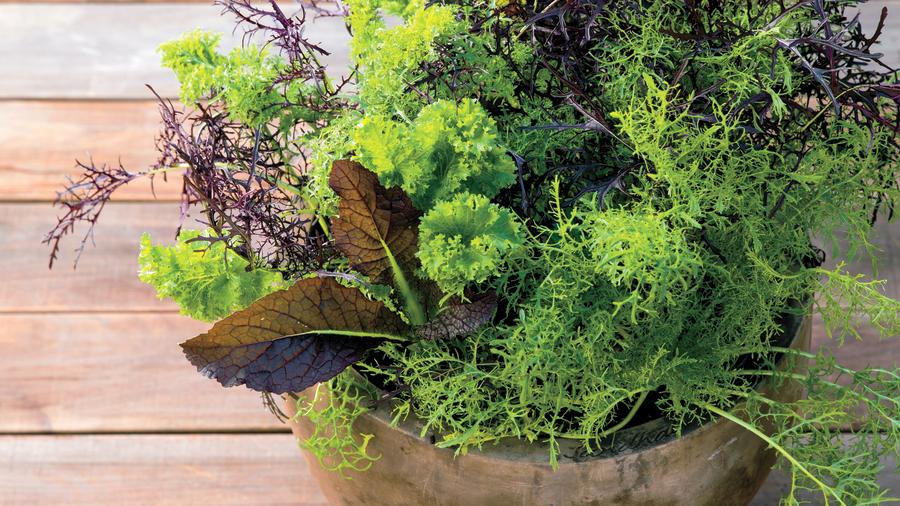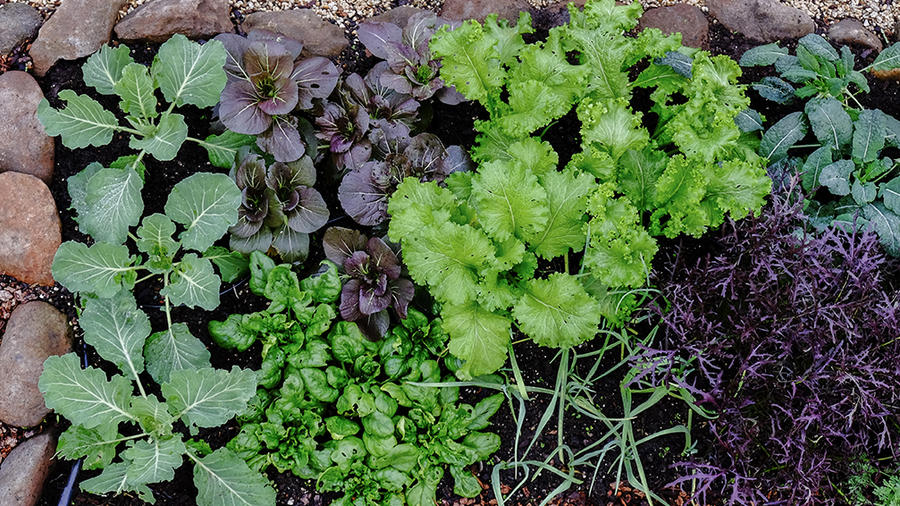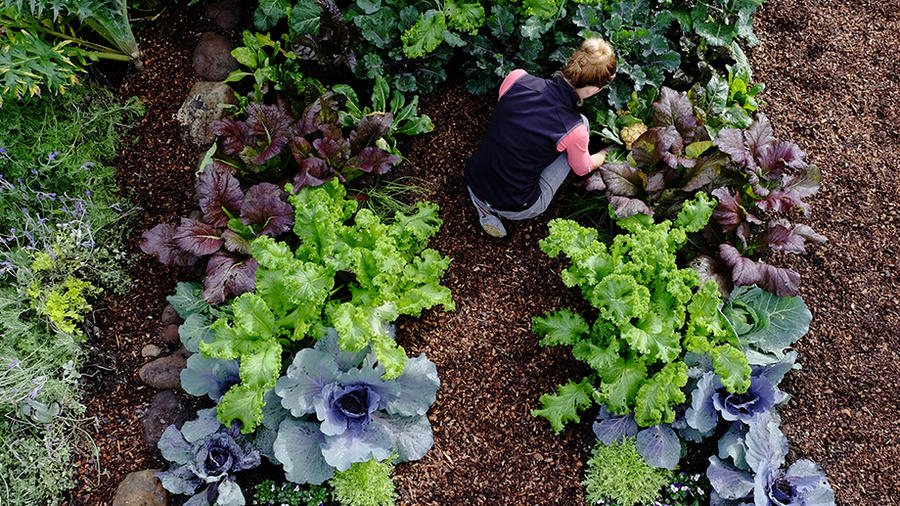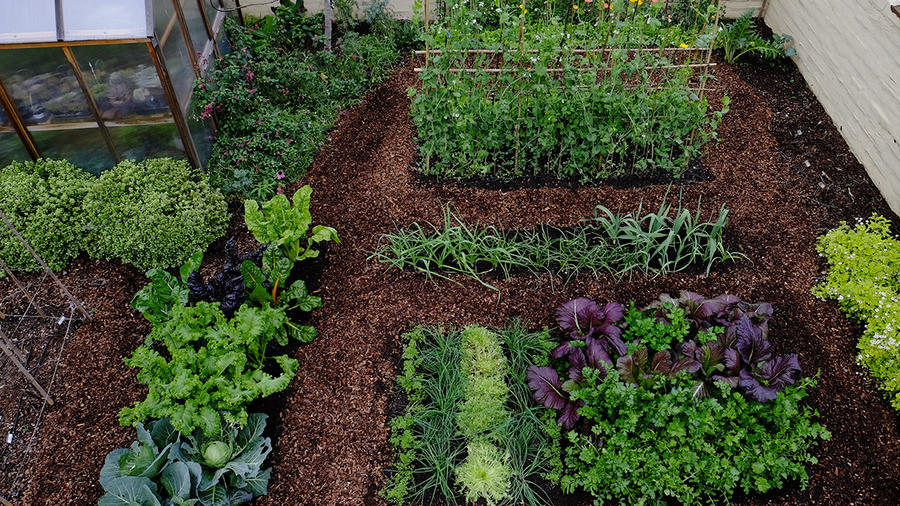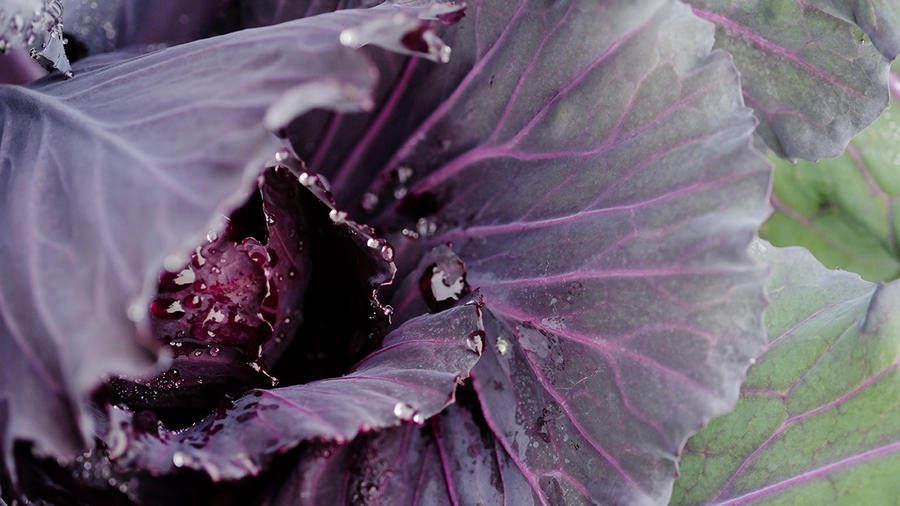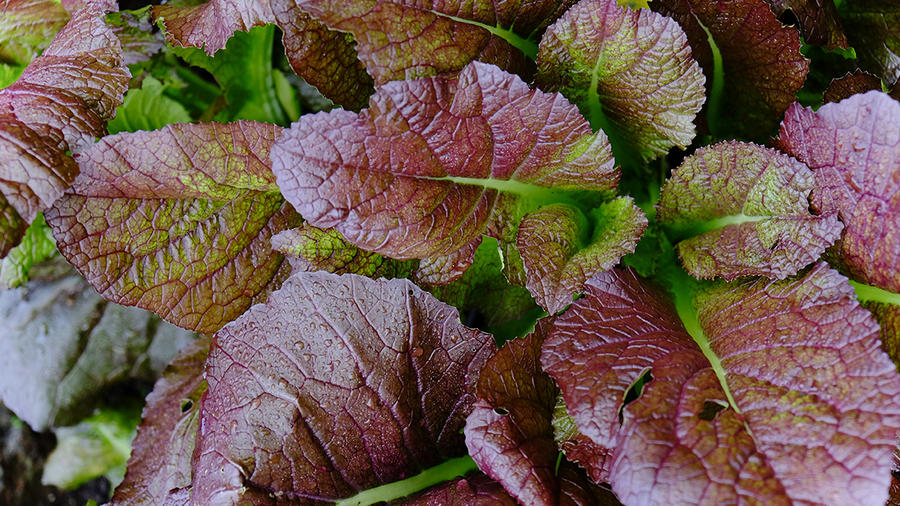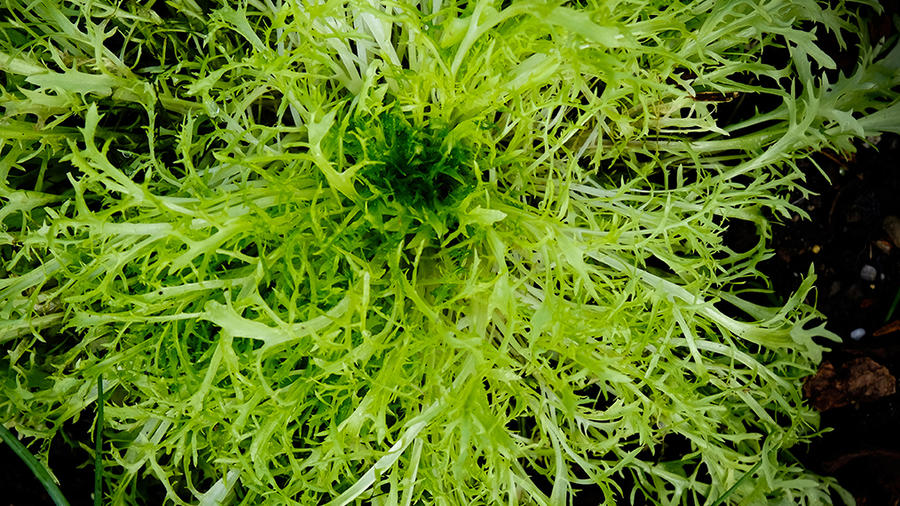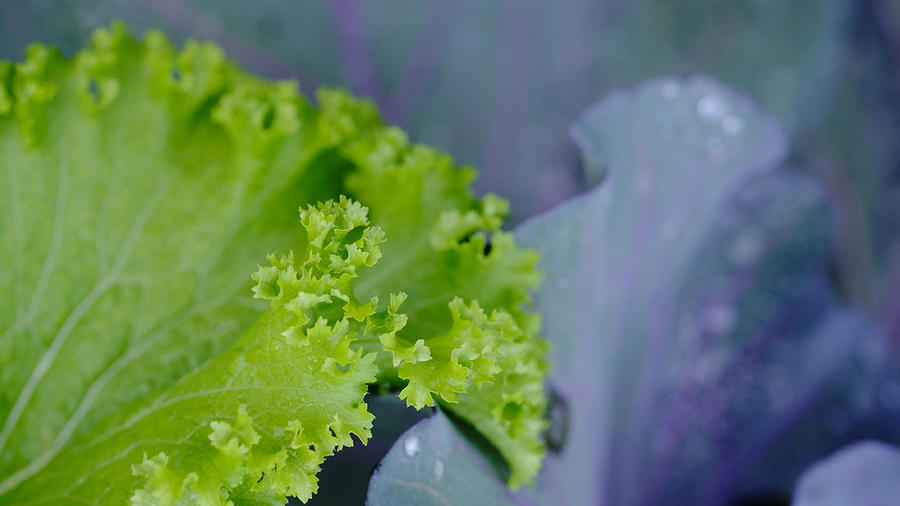
3 ways to grow cool-season veggies

Whether you’re ready to turn over your whole backyard to kale cultivation or only have room for a couple of containers on the patio, we’ve got you covered with three strategies for growing cool season crops.
Don’t wait too long this month to start planting. Warm soil and lingering Indian summer conditions provide the perfect opportunity for plants to have a growth spurt before winter really sets in.
Keep it contained
A fairly good sized container can be all you need to grow a few winter greens of your choosing or a quick crop of radishes. Greens with particularly dramatic leaves—such as rainbow chard, purple book choi, or mustards—can be just as pretty on the patio as ornamental arrangements. Plus, keeping greens right outside your doorstep means they’re easy to snip to add to winter soups or salads. Our container above measures 12 inches high and 14 inches wide and holds a mix of spicy mustards—‘Osaka Purple’, ‘Southern Giant’, and both ‘Red Streaked’ and ‘Lime Streaked’ mizuna.
Convert a corner
Choose the sunniest area of your yard (ideally, beds should receive 6 hours of full sun) and turn it over to growing cool-season veggies. A small rectangular bed (above) measuring 4 feet by 6 feet is enough real estate to grow all of the ingredients for a stir fry: collard greens, purple bok choy, spinach, ‘Southern Giant’ mustard, green onions, ‘Red Streaked’ mizuna, and lacinato kale.
A keyhole design makes the most of a smaller yard because it maximizes the space that can be cultivated and keeps pathways to a minimum while still providing easy access to harvesting. The beds above in our Test Garden measures 2 and a 1⁄2 feet wide and 9 feet long, connecting to form a “U”. We planted the following crops in a symmetrical pattern for more graphic impact: two types of collards, ‘Southern Giant’ mustard, ‘Brokali’ (a broccoli/ kale hybrid), Swiss chard, ‘Red Giant’ mustard, ‘Stonehead’ and ‘Red Jewel’ cabbage, frisée, and edible violas.
Turn your backyard into a mini farm
If you’d like to keep a steady supply of veggies streaming into your kitchen, your best bet is to turn over some considerable space to growing and stagger planting times. Once one crop is harvested (such as heads of cabbage, cauliflower, or frisée), have another waiting in the wings to take center stage (such as arugula, celery, or spinach). Neat and tidy farm rows are the best garden layout to keep track of crops. In the sunniest 15 by 18 foot area of our Test Garden, we could grow the following crops: two types of cabbage, ‘Southern Giant’ mustard, Swiss chard, ‘Rainbow Sun’ carrots, frisée, chives, arugula, Italian parsley, cutting celery, 3 different types of garlic, and sugar snap peas up a bamboo trellis.

